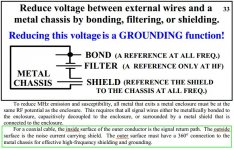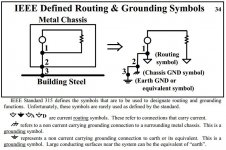I look at the point of contact before "Fixing" the cable and after. I also run a measurement. There are slight changes.
On the average RCA how do you know where the "point" of contact is? There are no "electrons" in this context. I guess you must be creating a layer of mono-atomic copper.
On the average RCA how do you know where the "point" of contact is? There are no "electrons" in this context. I guess you must be creating a layer of mono-atomic copper.
The point of contact is shiny, the rest on an old cable a bit duller.
DS-RELAYS
The contacts are shielded from the magnet.
Original SDS (google Hans Sauer) datasheets include drawings of the inside.
(nitrogen purged&sealed, capacitance under 1pF, typical thermal voltage < 1µV)
I didn't use freshly stripped wire. I used an old RCA cable. The cable connector and the test jig connectors had different metal finishes. I examined the point of contact with a 10 diopter magnifier. The big variable is humidity. But thanks for actually doing a test. Do you have a setup to measure the distortion?
If anyone really cares I can repeat the test and take pictures.
I'm interested to see that if you have the time to repeat it.
The contacts are shielded from the magnet.
Original SDS (google Hans Sauer) datasheets include drawings of the inside.
(nitrogen purged&sealed, capacitance under 1pF, typical thermal voltage < 1µV)
There are reeds with 50nV thermal voltage and are used to mux thermocouples and strain guages. The comment that reed relays are not used in these applications is just nonsense. Weiss for one has a reed based volume control.
Apologies for the tedium 'content' ...Respectfully, really these sort of posts are getting tedious, at least for me. Specific examples of what you do and what the impact is would liven things up just a tad.
Regards,
Rob.
nonsense.
Don't we know it : http://www.diyaudio.com/forums/solid-state/139622-naim-nac-552-preamp.html#post1763429
As JD already mentioned that nothing is OT here, I use two (bistable, dual coil) relays in parallel as amp output relay.
One switches between the output and an arc suppressor circuit, the 2nd relay is slowed down a little.
After the 2nd relay has closed to the output, the 1st one goes in parallel.
Both on making and breaking the output, the arc suppressing r/c is engaged.
In operation, the 8 parallel contacts handle 40A continuous, 160A peak.
Both are switched by a module, that used to be manufactured by SDS/NAIS/Panasonic, goes by the name VS5-24
(not really my idea, picked it up from the relay datasheet long time ago. Frank likely did it 30 years ago)
Last edited:
Hmmm ... looked at the spec. sheet of the relays Dan linked to and Panasonic's more comprehensive technical rundown - just in case I missed something the first time around ...
These are the sort of things that don't inspire confidence:
Min switching capacity: 10uA ("This value can change due to the switching frequency, environmental conditions, and desired reliability level, therefore it is recommended to check this with the actual load")
This is the sort of thing that somewhat undermined my belief that relays were up to it, the first time round ...
These are the sort of things that don't inspire confidence:
Min switching capacity: 10uA ("This value can change due to the switching frequency, environmental conditions, and desired reliability level, therefore it is recommended to check this with the actual load")
So much for femto amps ...Definition of Relay Terminology:
9. Minimum switching capability
This value is a guideline as to the lowest
possible level at which it will be possible
for a low level load to allow switching.
The level of reliability of this value
depends on switching frequency, ambient
conditions, change in the desired contact
resistance, and the absolute value.
Please use a relay with AgPd contacts if
your needs analog low level loads,
control, or a contact resistance of 100
mRor less.
We recommend that you verify with one
of our sales offices regarding usage
This is the sort of thing that somewhat undermined my belief that relays were up to it, the first time round ...
Last edited:
So much for femto amps ...
This is the sort of thing that somewhat undermined my belief that relays were up to it, the first time round ...
Sorry Frank but that is the reality, we tested max Ib on electrometers of 20fA for years with reed relays and 10^12 Ohm resistors.
The trouble is, in the world of audio things are a bit different ... and if the manufacturer isn't confident about his products then who do we "believe"?
Let's say we want to switch to another source, and at that moment the combination of circuitry and signal content is such the current flow doesn't rise above, say, 100nA for some minutes through the relay. What is telling me that in fact that signal will "break through" the relay contacts, and be heard?
Let's say we want to switch to another source, and at that moment the combination of circuitry and signal content is such the current flow doesn't rise above, say, 100nA for some minutes through the relay. What is telling me that in fact that signal will "break through" the relay contacts, and be heard?
Ok Pavel,
Let me see if I understand what you are showing. You ran the same test on two different pieces of cable. One is a true coax and the other not. In the first case the signal in the test cable is entirely propagated in a true coaxial and cancelled em field. In the second test the cable is poorly constructed and current also flows on the secondary "ground" connection. So due to the stray currents there is an inductance that magnifies the error voltage.
Either that or I have to claim you showed inadequate information or that it just can't be and change the subject.
Let me see if I understand what you are showing. You ran the same test on two different pieces of cable. One is a true coax and the other not. In the first case the signal in the test cable is entirely propagated in a true coaxial and cancelled em field. In the second test the cable is poorly constructed and current also flows on the secondary "ground" connection. So due to the stray currents there is an inductance that magnifies the error voltage.
Either that or I have to claim you showed inadequate information or that it just can't be and change the subject.
There are reeds with 50nV thermal voltage and are used to mux thermocouples and strain guages. The comment that reed relays are not used in these applications is just nonsense. Weiss for one has a reed based volume control.
Last I knew volume controls ran at a much higher level than the input to a phono preamp. Also what may be fine for some might not be for others.
What I am finding from my relay test queries is that there are a few purpose designed relays that have common acceptance among skilled designers.
Have you ever seen a Western Electric telephone relay?
Of course not all reed relays are the same either. I used to have a bunch I used for audio switching in paging systems. Very reliable on the N.O. contact, no so much on the N.C. set.
Ok Pavel,
Let me see if I understand what you are showing. You ran the same test on two different pieces of cable. One is a true coax and the other not. In the first case the signal in the test cable is entirely propagated in a true coaxial and cancelled em field. In the second test the cable is poorly constructed and current also flows on the secondary "ground" connection. So due to the stray currents there is an inductance that magnifies the error voltage.
Either that or I have to claim you showed inadequate information or that it just can't be and change the subject.
Yes, you understand quite well
Very dramatic demo Pavel. Keep up the good work and soon folks might actually get the hints that there really are differences!
Thanks Ed, I will try
As the hydrogen nuclei are spinning in/out of their natural range anyway, one might say they're also doing the tango.
Yes, and if you think about it, while you look to the movie and listen to the music, you actually are looking at what is at that very moment going on in your own brain as well. Eerie!
Jan
Can't do that. You've lost control of the current paths.
Jn
A tribune to Jneutron
http://www.umc.edu.dz/vf/images/emc/PDFs/Papers/Workshops/004_112.pdf
George
Attachments
- Status
- Not open for further replies.
- Home
- Member Areas
- The Lounge
- John Curl's Blowtorch preamplifier part II

